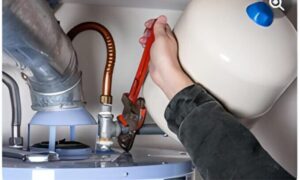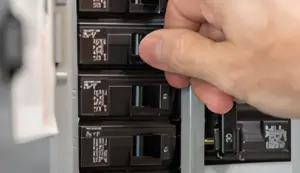A malfunctioning air conditioning system can be a nightmare, especially when it comes with a hefty price tag. Poor air flow within these systems can lead to a myriad of problems, impacting both efficiency and effectiveness.
From clogged filters and leaky ducts to inadequate ventilation and blocked vents, each factor plays a role in reducing air flow and causing wear and tear on system components. But the consequences don't stop there.
Increased energy consumption, compromised comfort levels, and potential customer dissatisfaction are just a few of the issues that can arise. In this article, we will explore the symptoms, causes, and effects of poor air flow in air conditioning systems, as well as the importance of preventive maintenance in avoiding these costly nightmares.
Stay tuned to discover how neglecting maintenance can not only impact your HVAC system but also your bottom line.
Symptoms of Poor Air Flow
When experiencing poor air flow in an air conditioning system, there are several telltale signs that can help identify the issue and prompt timely resolution.
One common symptom is not enough air coming from the registers. This can indicate a problem with the fan or a clogged filter.
Another sign is the system blowing warm air instead of cool air. This could be caused by a refrigerant leak or a malfunctioning compressor.
Hot and cold spots throughout the space can also indicate poor air flow, which may be due to leaky ducts or blocked vents.
Unbalanced pressure in the system can lead to issues such as increased energy consumption and reduced comfort levels.
Lastly, if the air conditioning system fails to operate altogether, it is a clear indication of poor air flow that requires immediate attention.
Causes of Air Flow Issues
Air flow issues in air conditioning systems can be caused by a variety of factors that hinder the proper circulation and distribution of cooled air.
One common cause is a clogged air filter, which restricts the flow of air and reduces the system's efficiency.
Fan issues, such as a faulty motor or dirty blades, can also impede air flow.
Leaky ducts are another culprit, as they allow air to escape before reaching its intended destination.
Inadequate ventilation, whether due to poor design or blockages, can further contribute to air flow problems.
Lastly, blocked vents prevent the conditioned air from properly entering the space.
Identifying and addressing these causes of poor air flow is crucial to maintaining an efficient and effective air conditioning system.
Effects on the HVAC System
One of the significant consequences of poor air flow in air conditioning systems is the accelerated wear and tear on crucial parts due to the buildup of dust and debris. This can lead to various issues that negatively impact the functioning of the HVAC system.
Here are five effects of poor air flow on the HVAC system:
- Increased strain and imbalance in the system due to blocked vents
- Slowed fan speed due to debris or a faulty motor
- Wasted cooled air due to leaky ducts
- Inefficient cooling due to inadequate ventilation
- Increased wear and tear on parts due to dust buildup
To prevent these issues, it is crucial to prioritize HVAC preventive maintenance. This includes replacing or cleaning air filters, inspecting fan blades and motors, evaluating and repairing ducts for leaks, and assessing and adjusting ductwork for updated equipment or layout changes.
Importance of Preventive Maintenance
Effective preventive maintenance is essential for ensuring the optimal performance and longevity of air conditioning systems. Regular maintenance helps to identify and address potential issues before they become major problems, reducing the risk of costly breakdowns and increasing the overall efficiency of the system.
By scheduling routine inspections and servicing, technicians can perform tasks such as replacing or cleaning air filters, inspecting and cleaning fan blades and motors, evaluating and repairing ducts for leaks, and assessing and adjusting ductwork for updated equipment or layout changes.
This proactive approach not only improves the comfort levels in the workspace but also reduces conflicts and complaints related to temperature control. Neglecting preventive maintenance can lead to increased air conditioning problems, reduced worker productivity, lost customers, and hidden costs that could easily be avoided.
Consequences of Neglecting Maintenance
Neglecting regular preventive maintenance for air conditioning systems can lead to detrimental consequences that not only impact the performance and efficiency of the HVAC system but also result in reduced worker productivity, lost customers, and hidden costs that could have been easily avoided. It is crucial to understand the consequences of neglecting maintenance to prevent these issues.
Here are the potential outcomes:
- Increased air conditioning problems
- Reduced worker productivity
- Lost customers
- Hidden costs of poor HVAC maintenance
- Importance of calculating the costs of poor HVAC maintenance
Impact on Worker Productivity
The efficiency and functionality of an air conditioning system directly impact the productivity of workers in a workspace. Poor air flow can have a significant negative effect on worker productivity. When the system is not delivering enough air through the registers, employees may experience discomfort and decreased concentration levels. This can lead to reduced work output and lower overall productivity.
Additionally, if the air conditioning system is blowing warm air or creating hot and cold spots, it can cause distractions and discomfort for workers, further impacting their ability to focus on their tasks. It is crucial for businesses to ensure proper air flow in their HVAC systems to maintain a comfortable and conducive working environment, ultimately maximizing worker productivity.
Customer Losses and Dissatisfaction
Customer losses and dissatisfaction can result from poor air flow in air conditioning systems. When air flow is compromised, it can lead to a range of issues that can negatively impact customers' experience and satisfaction. Here are five key consequences of poor air flow:
- Inconsistent cooling: Poor air flow can result in hot and cold spots throughout the space, making customers uncomfortable and dissatisfied.
- Reduced air quality: Insufficient air flow can lead to stagnant air and a buildup of allergens, causing discomfort and potential health issues for customers.
- Increased humidity: Inadequate air flow can lead to high humidity levels, creating a sticky and uncomfortable environment for customers.
- Noisy operation: When air flow is restricted, the system may have to work harder, resulting in increased noise levels that can be disruptive and annoying for customers.
- System breakdowns: Poor air flow puts additional strain on the system, increasing the likelihood of breakdowns and leaving customers without air conditioning.
Addressing and resolving air flow issues is crucial to prevent customer losses and ensure their satisfaction with the air conditioning system.
Calculating the Costs of Neglected Maintenance
As businesses strive to maintain optimal air conditioning systems, it is crucial to evaluate the financial implications of overlooking necessary maintenance tasks. Neglected maintenance can result in costly consequences that can significantly impact a company's bottom line.
One of the main costs of neglected maintenance is the increased likelihood of major system breakdowns, which may require expensive repairs or even complete system replacement.
Additionally, poor air flow due to neglected maintenance can lead to decreased energy efficiency, resulting in higher utility bills. Inefficient cooling can also lead to reduced worker productivity and customer dissatisfaction, leading to potential financial losses.
It is important for businesses to calculate the costs of neglected maintenance to understand the true impact on their finances and make informed decisions about investing in regular HVAC preventive maintenance.
Frequently Asked Questions
How Can I Determine if My Air Conditioning System Is Experiencing Poor Air Flow?
To determine if your air conditioning system is experiencing poor air flow, look for signs such as not enough air coming from the registers, blowing warm air, hot and cold spots, unbalanced pressure, and AC failure.
What Are Some Common Signs of Clogged Air Filters?
Some common signs of clogged air filters include reduced airflow, poor cooling performance, increased energy consumption, and the presence of dust or debris around the filter. Regular filter maintenance is crucial to avoid these issues.
How Can I Fix a Leaky Duct in My HVAC System?
To fix a leaky duct in your HVAC system, you can start by identifying the location of the leak and sealing it with duct tape or mastic sealant. It is recommended to consult a professional for a thorough inspection and repair.
Are There Any DIY Maintenance Tasks I Can Perform to Improve Air Flow in My Air Conditioning System?
Yes, there are several DIY maintenance tasks you can perform to improve air flow in your air conditioning system. These include cleaning or replacing air filters, inspecting and cleaning fan blades and motors, and assessing and repairing any leaks or blockages in the ductwork.
Can Poor Air Flow in an HVAC System Lead to Other Issues Besides Reduced Cooling Efficiency?
Yes, poor air flow in an HVAC system can lead to various issues besides reduced cooling efficiency. These include increased wear and tear on parts, slowed fan speed, wasted cooled air, inefficient cooling, and strain on the system.
Conclusion
In conclusion, poor air flow in air conditioning systems can lead to a range of problems that can significantly impact the efficiency and effectiveness of these systems. By prioritizing preventive maintenance and addressing issues such as clogged filters, leaky ducts, and blocked vents, businesses and individuals can avoid costly air conditioning nightmares and maintain a productive and comfortable indoor environment.
Neglecting maintenance can result in increased energy consumption, compromised comfort levels, and potential losses in worker productivity and customer satisfaction. It is crucial to understand the high cost of poor air flow and take proactive measures to ensure optimal performance.







